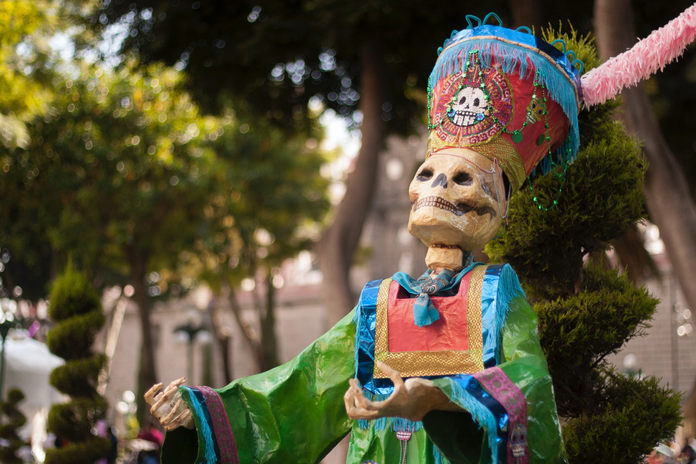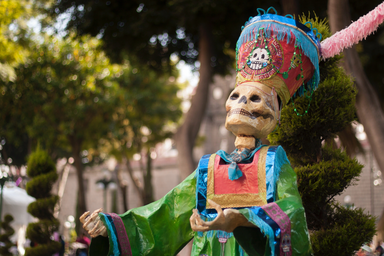It’s finally that time of the year—spooky season has rolled in! While everyone knows what we do for Halloween—pumpkin carving, dressing up, trick-or-treating—did you know that there are many other holidays with spooky traditions around the world, although not as widely known as Halloween? While exact dates or practices vary, the similarity lies in how most of them are about interacting with the dead.
- DÍA DE LOS MUERTOS
November 1-2 // Mexico
If you’ve watched Coco, you’ll already know about this holiday. People believe the living and the dead are reunited during Dia de Los Muertos, so families make offerings on altars to their ancestors and clean up their graves. Another special tradition revolves around marigolds; they are believed to guide the dead in the living world and are used in decorations or offerings. People, also, paint their faces as skulls. It is said that they do this as a way of accepting death as an everyday experience, by laughing joyfully at/enjoying the skulls. Pan de Muerto, bread of the dead, is baked—there is a round part that represents the body and long parts which are supposed to be limbs—and while this sounds very creepy, many people have testified that Pan de Muerto is delicious.
- THE HUNGRY GHOST FESTIVAL
August 12 // China
The Hungry Ghost Festival is celebrated on the 15th day of the Ghost Month, which is the seventh month of the Chinese lunar calendar. Ghost Month is the period in which Chinese people believe that gates to the underworld open, and ghosts become free to roam around the living world. A difference between the Hunger Ghost Festival and the other dead-honoring holidays is that the Hungry Ghost Festival is intended to appease and honor wandering souls instead of their ancestors. These ‘wandering souls’ are referring to people who have died through murder or suicide, or did not receive a proper burial and care/remembrance. During this festival, people make offerings of food, money, and entertainment, so the ghosts would not hurt anyone out of their sorrow or spite.
- SETSUBUN
FEBRUARY 3 // JAPAN
February 3rd is the day before the start of spring in the Japanese lunar calendar. Setsubun is basically a holiday devoted to chasing away evil spirits before spring starts. The most popular ritual on Setsubun would be throwing roasted beans around houses, temples, and shrines, as beans symbolize vitality and throwing them around would be like ‘purifying’ the homes, temples and shrines. When throwing the beans, you are supposed to shout “おにはそと、ふくはうち” (“Devils out, happiness in”). Then, you pick up and eat a number of beans, the same as your age. An older, somewhat outdated tradition would be hanging a hiragi over their doorway—a charm made of holly and a small fish. Demons supposedly love the dried fish, so they would try to grab it, but then the holly would stab their hand and drive them out.
- FASCHING
November 11 11:11 pm – November 12 11:59 pm // Germany
Fasching is a form of the Roman Catholic Shrovetide carnival that is celebrated in German-speaking countries. Fasching literally means “carnival,” so it is a festival, and the most notable celebration would be “mockery.” This is a rare holiday in that during Fasching, the roles of power are reversed; commoners make fun of the rulers by making a mock government and ridiculing them through speech, action, etc. The scary part of Fasching might come from the creepy masks people wear, which began with the intention of hiding commoners’ identities, so they would not become targets of the mocked rulers. But, overall, Fasching is a fun, comical festival filled with dancing and skits.

